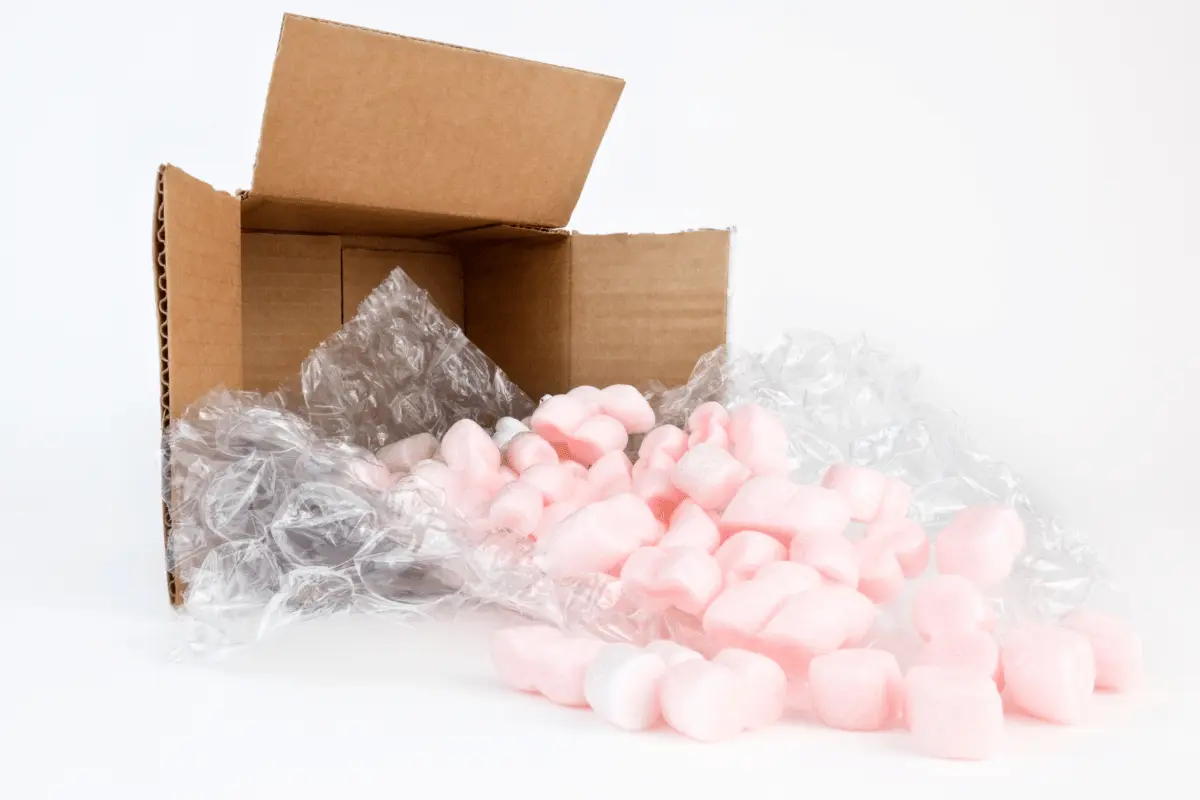When it comes to shipping or storing items, choosing the right packaging material is crucial. Not only does it protect your valuable belongings, but it also ensures they arrive at their destination in pristine condition. In this article, we will explore some of the most common types of packaging materials used in boxes, from sturdy cardboard to protective bubble wrap and everything in between.
4 Common Types Of Packaging Materials
Cardboard
Cardboard, often hailed as the champion of packaging materials, is a versatile and widely used choice for boxes. Made from layers of thick paper fibres pressed together, it provides excellent durability and strength while remaining lightweight.
One of the key advantages of cardboard is its affordability. It is a cost-effective option for businesses and individuals who need to ship or store their products without breaking the bank. To customise different products, cardboard boxes can be cut into different shapes and sizes.
Another notable feature of cardboard is its eco-friendliness. Most cardboard boxes are made from recycled materials, reducing waste and minimizing environmental impact. Furthermore, when you no longer need your cardboard box, it can be easily recycled again.
When it comes to protection, cardboard excels in safeguarding items during transit or storage. Its sturdy construction offers resistance against impacts and compression forces that may occur during handling or stacking. However, keep in mind that it may not provide sufficient protection against moisture or extreme weather conditions unless treated with water-resistant coatings.
Bubble Wrap
Bubble wrap is a popular type of packaging material known for its ability to protect fragile items during shipping and handling. Made from plastic, it consists of small air-filled bubbles that provide cushioning and shock absorption.
The main purpose of bubble wrap is to prevent damage by creating a barrier between the item and any external force or impact it may encounter. When wrapped around delicate objects such as glassware, electronics, or ceramics, bubble wrap acts as a protective layer that absorbs shocks and vibrations.
Another benefit of using bubble wrap is that it provides excellent insulation properties. The trapped air inside the bubbles acts as an insulator against temperature changes, making it suitable for protecting items sensitive to extreme temperatures.
A drawback of bubble wrap is its susceptibility to moisture and moisture-related damage. If left unprotected, moisture can cause the bubbles to burst, leading to leakage and damage to the item being protected.
Styrofoam
Styrofoam, also known as polystyrene foam, is a common type of packaging material due to its excellent insulation properties. It is lightweight and provides cushioning and protection for delicate items during transit.
One of the main advantages of Styrofoam is its ability to absorb shock and impact, making it ideal for protecting fragile objects such as electronics or glassware. Its unique structure allows it to distribute weight evenly, reducing the risk of damage. Moreover, Styrofoam is resistant to moisture and chemicals, ensuring that the contents of the package remain safe and intact. This makes it suitable for shipping products that are sensitive to water or corrosive substances. It can be moulded into specific designs or cut into different forms depending on the requirements of the packaging.
However, one drawback of using Styrofoam is its environmental impact. It is not biodegradable and takes hundreds of years to decompose in landfills. Although limited, there are few recycling options.
Kraft Paper
Kraft paper is another versatile and eco-friendly type of packaging material that has gained popularity in recent years. It is strong and durable and made out of wood pulp.
One of the main advantages of using kraft paper is its ability to withstand heavy loads without tearing or breaking. This makes it an ideal choice for packaging items such as books, clothing, and electronics. In addition to being strong, kraft paper is also lightweight. This means that it adds minimal weight to the overall package, reducing shipping costs and making it easier to handle.
Another benefit of using kraft paper is its biodegradability. Unlike plastic packaging materials that take centuries to decompose, kraft paper breaks down naturally within a few weeks or months. Its natural brown colour also gives a rustic and organic look to any package.
However, one downside of using kraft paper is its price. It is more expensive than other packaging materials, making it less affordable for small businesses or startups.
Conclusion
While there are many different types of packaging materials available in the market, the most important thing is to choose the right one for the specific product. By understanding the different properties of each material, businesses can make informed decisions that will benefit the environment. We at Xetgo pride ourselves on providing leading packaging solutions that are both environmentally friendly and cost-effective. If you’re looking for a reliable and experienced packaging supplier, contact us today!
Here’s our tip for you. Remember always to use sustainable packaging materials whenever possible. It’s important to remember that our planet is getting smaller, and there are only so many resources we can waste. By using sustainable packaging, you’re not only helping the environment, but you’re also doing your part to save money on material.







